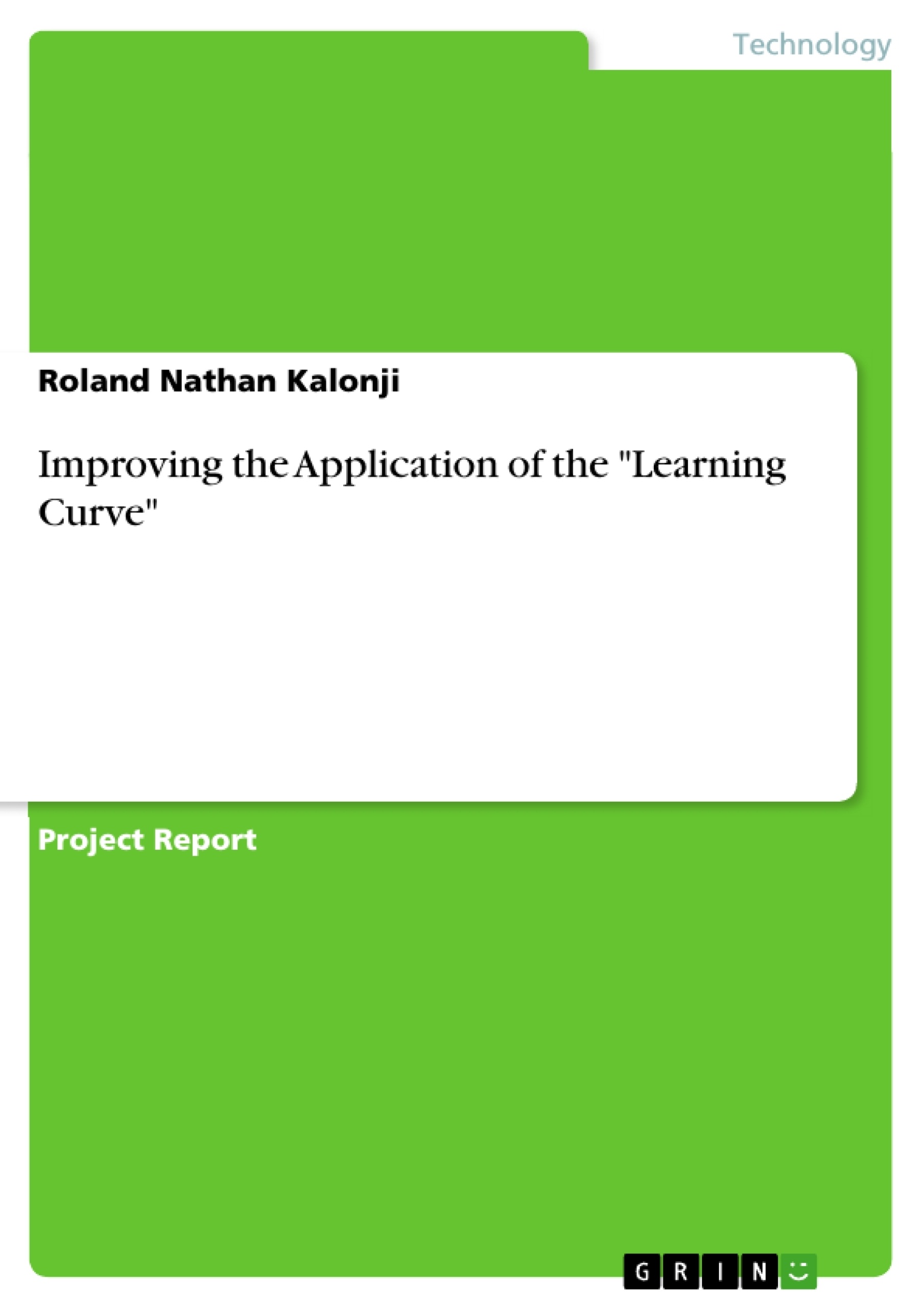There exist some fields in which the learning curves can be applied; they have a much wider applications including manufacturing and marketing strategy. However, they underlay the concept of continuous improvement, pricing decisions, work scheduling, standard setting, direct labour budget etc. Learning curve states that decreasing man hours are required to accomplish any repetitive task as the operation is continued; then knowledge of learning curve can be useful both in planning and control. Estimates of learning curves are used in many applications in organizations and they can be effective with the job which is repetitive in nature particulars with same machinery and tools; thus this study aims at improving the application of the learning curve which describes how knowledge is acquired and retained when people repeat a process. The overall purpose of this report is to determine whether or not the learning curve theory can be replicated. Data will be gathered based on the England flyer folding instructions; thereafter we will be plotting the learning curve by calculating the cumulative average, estimating the table of unit improvement curves and determining the learning rate.
When a new product or process is started, performance of worker is not at its best and learning phenomenon takes place. As the experience is gained, the performance of worker improves, time taken per unit reduces; and then his productivity goes up. Thus, people who learn always increase their experience, they gain skill and ability from their own experience and the results throughout processes are improved. The usual use of learning curves is to estimate the labor hours and thereby much of the cost, of a manufactured good that is built in significant quantities.
Table of Contents
- Introduction
- Background and motivation
- Problem statement
- Literature Review
- Learning Curve
- Learning Curves Approaches
- Arithmetic Approach
- Logarithm Approach
- Coefficient Approach
- The Standard time and Normal time
- Research Question
- Objectives
- Experimentation
- Methodology
- Apparatus
- Observations
- Analysis
- Results
- Discussions
- Conclusion
- References
Objectives and Key Themes
The primary objective of this report is to investigate the applicability of learning curve theory in a practical context, aiming to replicate its findings. The study will explore how knowledge is acquired and retained when individuals repeat a process, analyzing the relationship between unit production time and cumulative units produced.
- Learning Curve Theory and its applications
- Analysis of Learning Curve approaches (Arithmetic, Logarithm, and Coefficient)
- Impact of Learning Curve on production processes and labor costs
- Practical application of Learning Curve principles using England flyer folding instructions
- Determination of learning rate and unit improvement factor
Chapter Summaries
- Introduction: This chapter introduces the concept of learning curves and their relevance in various fields, particularly in manufacturing and marketing strategy. It emphasizes the relationship between experience, performance improvement, and reduced unit time. The chapter also outlines the assumptions underlying learning curve theory, such as standardized products, decreasing unit time, and a predictable pattern of time reduction.
- Literature Review: This chapter delves into the concept of learning curves, exploring different approaches to their analysis, including arithmetic, logarithm, and coefficient methods. It discusses the significance of standard time and normal time in learning curve calculations.
- Experimentation: This chapter outlines the methodology and apparatus used to collect data for the study. It details the process of gathering data based on the England flyer folding instructions, focusing on the relationship between unit production time and cumulative units produced.
- Observations: This chapter presents the raw data collected through the experimentation process, highlighting the observed relationship between unit time and cumulative units produced. It serves as a foundation for further analysis.
- Analysis: This chapter delves into the analysis of the collected data, focusing on identifying patterns and trends in the learning curve. It involves calculations of cumulative averages, unit improvement factors, and the learning rate.
- Results: This chapter presents the key findings of the study, highlighting the observed learning rate and its implications for the practical application of learning curve theory. It emphasizes the relationship between repeated practice and improved performance.
- Discussions: This chapter explores the significance of the findings in relation to the existing literature on learning curves. It discusses the implications of the results for understanding how knowledge is acquired and retained in repetitive tasks, as well as their potential applications in various fields.
Keywords
The core concepts of this report revolve around learning curve theory and its applications in various contexts. Key terms include learning curve, unit production time, cumulative units produced, learning rate, unit improvement factor, arithmetic approach, logarithm approach, coefficient approach, standard time, normal time, England flyer folding, and repetitive tasks. The report explores both theoretical and practical aspects of learning curve theory, aiming to demonstrate its relevance in real-world scenarios.
- Quote paper
- Roland Nathan Kalonji (Author), 2017, Improving the Application of the "Learning Curve", Munich, GRIN Verlag, https://www.grin.com/document/388767




